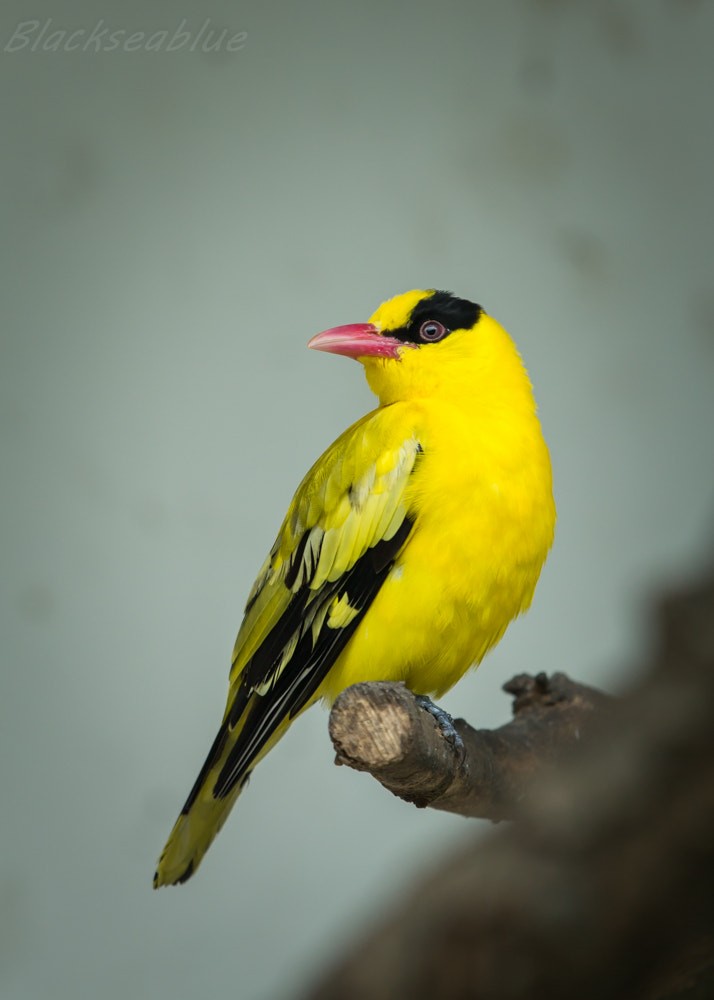Black-naped Oriole
A species of Old world orioles Scientific name : Oriolus chinensis Genus : Old world orioles
Black-naped Oriole, A species of Old world orioles
Botanical name: Oriolus chinensis
Genus: Old world orioles
Content
Description People often ask General Info
Description
The black-naped oriole is medium-sized and overall golden with a strong pinkish bill and a broad black mask and nape. The adult male has the central tail feathers tipped yellow and the lateral ones are more broadly yellow. The female has the mantle colour more greenish or olive. The juvenile has a streaked underside. The nestling has dull greenish with brown streaks. The head and nape are more yellowish and the undertail coverts are yellow. Several variations exist in the populations that have been separated as subspecies. The subspecies in the Andamans, O. c. andamanensis has all black wings while O. c. macrourus of the Nicobars has a very broad nape band so that only the top of the head is yellow. The wings are all black with a yellow primary covert patch. The calls of the Andaman and the Nicobar subspecies are said to be quite different, the latter having a more modulated call note. In the Southeast Asian populations some geographic trends include a reduction of yellow on the forehead and a decreased brightness in the yellow plumage from north to south. Females from southern populations are more greenish on the back and tail and there are no yellow spots on the tips of the secondaries as in northern populations. The usual call is a nasal niee or myaa and the song (diffusus) is a fluty iwee wee wee-leeow. They have a dipping flight. 
Size
28 cm
Colors
Black
Yellow
Nest Placement
Tree
Feeding Habits
Black-naped Oriole primarily consumes berries and insects, foraging in the treetops to locate its food, although any distinct dietary adaptations are not specified.
Habitat
The black-naped Oriole inhabits a variety of wooded environments including evergreen and deciduous forests, forest edges, groves, as well as human-modified landscapes such as plantations, parks, orchards, and wooded suburban areas. Their habitat range extends to mangroves, coastal forests, and even scattered trees in open countryside, along roads, and within villages. These birds are adapted to both lowlands and hills, found at elevations up to 1600 meters in certain parts of their range. They are also commonly found within city gardens, indicating a capacity to thrive in urban settings.
Dite type
Frugivorous
People often ask
General Info
Feeding Habits
Bird food type

Fruit
Behavior
Black-naped orioles have been recorded to feed on a range of berries including Trema orientalis, Ficus and others apart from insects. It has been suggested that they may have aided in the dispersal of Ficus species into the island of Krakatoa where they were also among the early pioneer species. In India it has been noted to take nectar from large flowers such as those of Salmalia and Erythrina. They can sometimes be nest predators on smaller birds. The breeding season is April to June (January–March in the Nicobars) and the nest is a deep cup in a fork of a tree. The eggs, two to three, are salmon pink with reddish spots and darker blotches The nests are often built in the vicinity of the nest of a black drongo. Two or three nests may be built by the female and one is finally chosen for laying eggs. Males may sometimes sit beside the unused nests. Incubation is by the female alone and the eggs hatch after 14 to 16 days and the chicks fledge after another two weeks. Females stay closer to the nest, taking part in nest sanitation by removal of fecal sacs, driving away predators and feeding the young. The males take a more active role in feeding and guarding. Eurasian tree sparrows and black bulbuls may sometimes use abandoned nests. Nest predators include crows, treepies and hawks. In many parts of Southeast Asia, they are trapped and sold in the bird trade. 
Distribution Area
Subspecies diffusus breeds in eastern Siberia, Ussuriland, northeastern China, Korea and northern Vietnam and is widespread across India during winter, mainly in the northeastern parts and in the peninsular region and also found in Bangladesh. The population in the Andaman and Nicobar Islands are resident. In winter, populations breeding in eastern Asia spend the winter in the tropical areas of Southeast Asia such as Thailand and Myanmar. Subspecies diffusus is an uncommon migrant in many parts of South India and very rare migrant to Sri Lanka and are most regularly seen in the Western Ghats. In Singapore they are believed to have established as breeders only in the 1920s and are today common even within gardens in the city. In the 1880s they were considered rare. At the present time, orioles are fairly common in Singapore. The black-naped oriole is found in forests, gardens and plantations. It feeds on berries and insects in the canopy. 
Species Status
Not globally threatened.
Scientific Classification
Phylum
Chordates Class
Birds Order
Perching birds Family
Old world orioles Genus
Old world orioles Species
Black-naped Oriole 